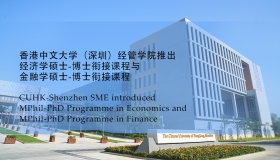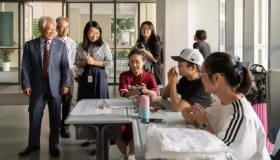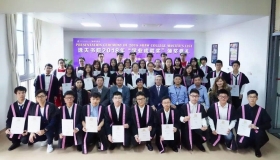Diligentia et Sapientia | The Colonial History and Urban Landscape of Hong Kong
The Historical Pictures of Hong Kong
At the beginning of the lecture, Prof. Lee brought us the precious pictures of Hong Kong in the old days and described the history of the growth of this Asian metropolis in details. The collection of old photographs shows a lot of Victorian Hong Kong style, such as the Victoria Harbor and Queen's Road in the mid-1880s, the Chinese European settlement boundary in 1888, and the magnificent Hong Kong Grand Hotel built in 1900. At the same time, it vividly reproduced the living conditions of the Chinese people at that time, from the representative buildings of Chinese settlements – Hang Fa Lau where filled with wine and prostitutes, to the rickshaw puller in Sheung Wan Haidi in 1920, and to the honeycombed Kowloon Walled City in 1968’s Hong Kong. Therefore, students have an overall picture of Hong Kong in their minds. During the seminar, Prof. Lee f slowly rolled out a long scroll of urban history and culture.
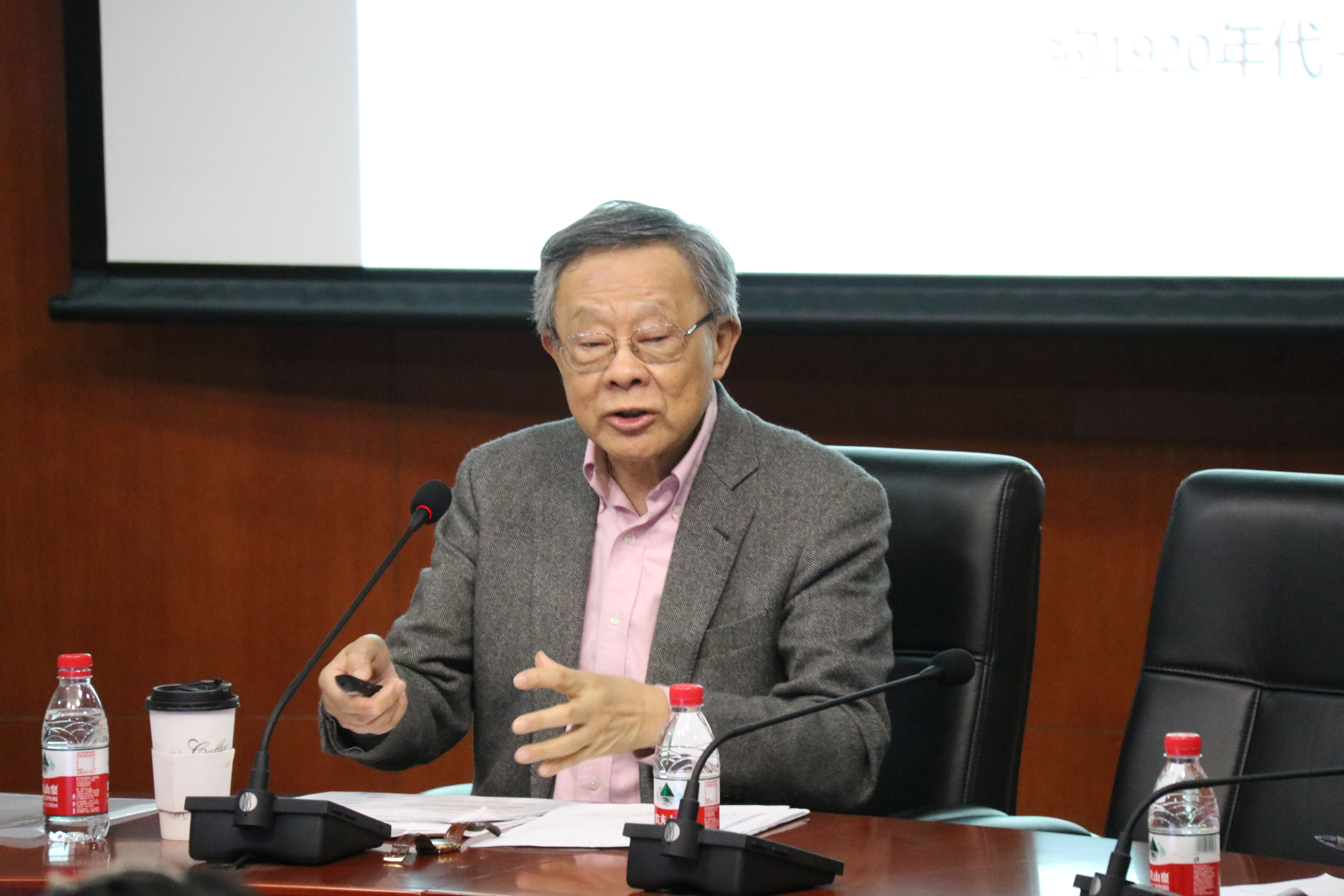
Perspectives and Views
As Professor Lee mentioned in the book City Between Worlds: My Hong Kong, Hong Kong is a city in the middle of the world. Rich historical and cultural backgrounds have shaped the cultural ecology of Hong Kong's miscellaneous and interwoven culture; therefore, Hong Kong presents diverse cultural backgrounds. Through the superficial urban landscape, Professor Lee gazed at t Hong Kong’s society and shared his academic contemplation and confusion with us as followings.
In Hong Kong's mixed urban culture, what are the actual living spaces and architectural forms?
What kind of cultural heritage has left for many years of colonialism?
Is there any retention of local culture in multiculturalism?
In Hong Kong where there is no intellectual elite, how can we listen to the voices of the lower classes?

The intuitive impression of Hong Kong is crowded. The influx of mainlanders during the war, the influx of Americans after the Vietnam War, and that of Portuguese people due to the reasons of Macao... have entitled Hong Kong for four well-known features, namely, density, centrality, hybridity, and verticality. Professor Lee laughed, "Hong Kong doesn't want to be number one in the world, but one day Mong Kok became the world's most densely populated corner in the world." And the initial architectural forms were divided into three categories, respectively, the mainlanders, the surrounding buildings in the New Territories, the three-story tenement house, and the storehouse in the form of an upstairs store and a storefront. However, the first two types of houses are very rare today, since the largest number of modern buildings in Hong Kong today are skyscrapers. No matter the “high-rise aesthetics” or “concrete forest”, the density of skyscrapers in Hong Kong has long surpassed New York, and it has become a global leader. Professor Lee believes that such a history of architectural development also embodies the "invisible logic" inherent in the city of Hong Kong.

In the urban fragments that make up of Hong Kong, the remnants of either explicit or implicit colonial culture are everywhere. For example, in 1896, the Pottinger Street was actually a transliteration of the name of the first Governor. The local people were asked about the meaning of the word. Most of them could not answer. In fact, such street names without linguistic meanings are often transliterated by English names. Not only the name but also the shadow of the Victorian era can be found everywhere in the typical Hong Kong city basic form, such as the Bank Hotel Government General Administration and so on.
 As such a post-colonial city, Professor Lee emphasized that colonialism is not a monolithic one, and it brings with it a complex influence of modernization. Influenced by foreign culture, what is the local culture of Hong Kong? Professor Lee mentioned that if he wanted to use a film to summarize Hong Kong's indigenous culture, he would choose Rouge, starring Leslie Cheung and Anita Mui. Prof. Lee played lively in the film's Nanyin lyrics, called The Autumn and the Fall, and explained the cultural metaphors of the Cantonese culture behind the characters of the twelve minorities and proverbial names. From classical poetry and roots in the search for musical operas, Hong Kong's indigenous cultural resources and Ling Nan culture can be said to be in one continuous line.
As such a post-colonial city, Professor Lee emphasized that colonialism is not a monolithic one, and it brings with it a complex influence of modernization. Influenced by foreign culture, what is the local culture of Hong Kong? Professor Lee mentioned that if he wanted to use a film to summarize Hong Kong's indigenous culture, he would choose Rouge, starring Leslie Cheung and Anita Mui. Prof. Lee played lively in the film's Nanyin lyrics, called The Autumn and the Fall, and explained the cultural metaphors of the Cantonese culture behind the characters of the twelve minorities and proverbial names. From classical poetry and roots in the search for musical operas, Hong Kong's indigenous cultural resources and Ling Nan culture can be said to be in one continuous line. From Professor Lee’s academic perspectives, Hong Kong is a city that does not cultivate intellectual elites. It is located in the Ling Nan culture region where ethnic group identity is relatively rare. It was only after the Japanese invasion that it drove Hong Kong people's nationalism. It has not experienced the baptism of the May 4th Movement. There have been no social changes driven mainly by intellectuals. The British have not brought in Shakespearean tradition. In 1919, the then Governor Yu Wentai first established the Chinese major in the Hong Kong University. Around 1940, a large number of mainland scholars came to Hong Kong, but whether left-wing literati and Hong Kong's local culture were merged, how was the degree of acceptance of literati from the South? Due to the lack of documented records, these historical and cultural doubts are not known.
From Professor Lee’s academic perspectives, Hong Kong is a city that does not cultivate intellectual elites. It is located in the Ling Nan culture region where ethnic group identity is relatively rare. It was only after the Japanese invasion that it drove Hong Kong people's nationalism. It has not experienced the baptism of the May 4th Movement. There have been no social changes driven mainly by intellectuals. The British have not brought in Shakespearean tradition. In 1919, the then Governor Yu Wentai first established the Chinese major in the Hong Kong University. Around 1940, a large number of mainland scholars came to Hong Kong, but whether left-wing literati and Hong Kong's local culture were merged, how was the degree of acceptance of literati from the South? Due to the lack of documented records, these historical and cultural doubts are not known.

The Pictures of Future
Today, Hong Kong, already an Asian metropolis, is moving from the post-colonial era to globalization times. The more inclusive atmosphere in China is the most attractive place for Professor Lee as an “internationalist”. At the same time, Professor Lee also pointed out that Hong Kong has become increasingly obstinate and there is little room for expansion. Therefore, the future interaction between Guangdong, Hong Kong and Macau in the Greater Bay Area will surely increase. The vision of this international metropolis has already been closely linked with the blueprint of the Greater Bay Area. Talking about the most appropriate image of Hong Kong in his own mind, Professor Lee displayed several paintings created by his wife, Mrs. Ziyu Lee, on the scene. Mrs. Lee said that because she had never learned to draw, but she is sensitive to color and could, therefore, exercise her freedom without restraint, so as to draw your own real spiritual landscape. Prof. Lee also advocates students not to abandon humanistic interest, “under the pressure of time and space nowadays, we need to have cultural hobbies to distress ourselves.” Just as Mrs. Lee came out of the melancholy disorder with paintings and used her colors to express her feelings, Professor Lee uses the knowledge of Hong Kong to fill the portrayal of Hong Kong's cultural background and deconstruct the cultural elements to create a picture of Hong Kong's future. It is respectable that he stretched to the past one the one hand, and point to the future on the other one.

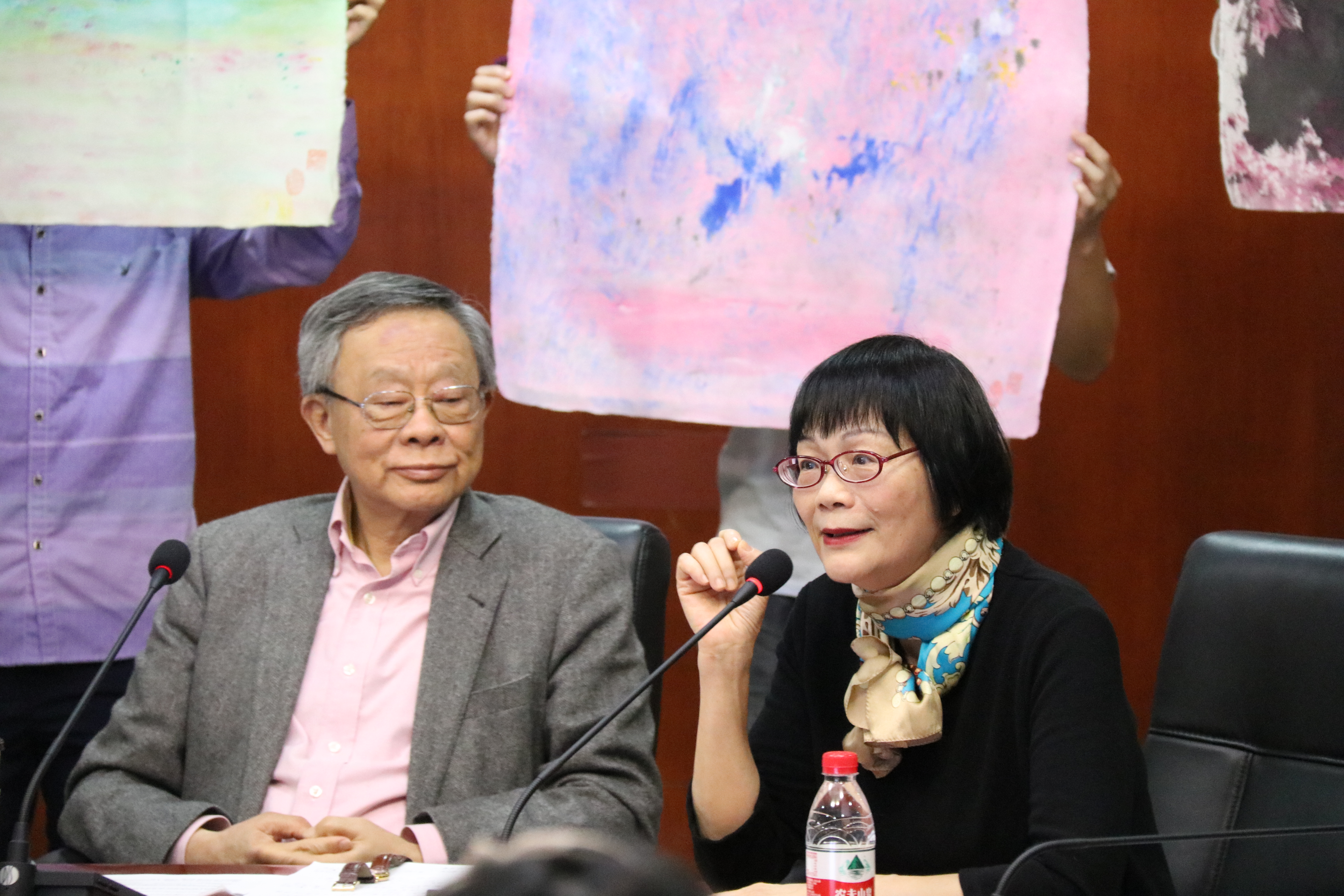
Student’s Feedbacks
Prof. Lee's in-depth and easy-to-understand lectures presented us with a multifaceted Hong Kong. His lecture is interesting and humorous. In the seminar, he talked about the city with the most skyscrapers, the limited control of colonialism, the images of Hong Kong and Kowloon in two worlds, the mirror image of Hong Kong and Shanghai, and the scholars who have neglected to study the culture of Hong Kong during the 1840-1940 period...Professor Lee analyzed and presented a marginalized commercial and cultural center vividly.After the seminar, I am privileged to have dinner with Prof. Lee and his wife. They are so in love with each other. Prof Lee talked a lot on the table, however, Mrs. Lee had reminded him to eat more from time to time. I saw a man who is a great scholar and a man with a relaxed and honest temper.
Zheng Minghao (2015 SSE, Diligentia College)
Looking forward to the rational perspectives, it unexpectedly welcomed the warmth of human nature. A close contact with Prof. Lee, listening to the professors laughing, watching the interaction of this white-haired couple in love, feeling the professor’s strong understandings and suggestions of general education... There were many moments when I actually captured the glory of humanity. I am very grateful to the Diligentia College and the teachers. I look forward to more seminars in the future!
Zhang Jialin (2016 SME Diligentia College)
Having visited Hong Kong several times, I have never been so closely associated with literary film and television and its special colonial history. Professor Lee is indeed a person who studies the city, Queen's Road, the Pottinger Street, and Kowloon Walled City. The well-known place names have unexplored backgrounds and profound meanings. Urban Wanderers and blind-eyed singers, shrimp balls, and rouge buckles have all described the city's past ups and downs. It is the unique mark left by history. After everyone has shown up, it shows a special scene.
Liu Chang (2016 SME, Diligentia College)
In just over couples of hours, Prof. Lee used his extensive knowledge to tell a tortuous Hong Kong colonial history, linking numerously broken and mixed cultural fragments together. Among these are literature, movies, songs, architecture and even food. He stretched out the complicated Hong Kong cultural environment into a three-dimensional map and compress it into a historical line. The details may not be presented one by one due to time constraints, but I still have a clear understanding of Hong Kong's 100-year development path. In addition, Professor Lee still recommended us a lot of wonderful movies and books, which made me very happy. There is no doubt that this lecture was the happiest two hours since March. In the days when midterm and assignment were intertwined, I once thought that life was to complete a task and then go to the next task. But this lecture has let me see the wonderful world. If you are willing to explore, you will always have unexpected scenery and knowledge. No matter how busy I will be in the future, I will find time to read some books, go to some places, explore history, and gain the unknown.
Sha Dinglin (2016 SSE, Shaw College)
In the last semester, I heard a lecture by Professor Lee on the literati regarding the scholars in the period of the Republic of China and benefited greatly. Prof. Lee’s academic career is very extensive, and he is able to talk about and communicate with culturally relevant content. It is truly admirable. His humor made all listeners be focused and open-minded, what’s more, he remained humble and not claiming himself as a “master”. Mrs. Lee's attendance surprised the students. In the Q&A session, I raised a question about the difference between Shanghai and Hong Kong. Professor Lee's answer in simple language with his own experience made me almost entertained. I heard that Professor Lee is about to end his tenure as an honorary professor at the HSS, the CUHK(SZ).
Zuo Shuwen (2017 SME, Muse College)

